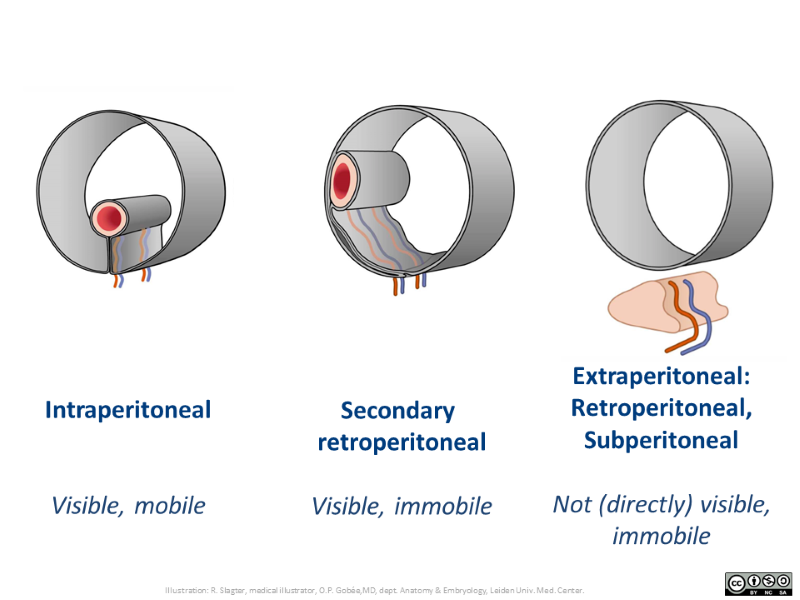Intraperitoneal, secondary retroperitoneal and (primary) retroperitoneal

More generically, the third location should be named extraperitoneal, meaning 'outside the peritoneal cavity'. This includes, for instance, locations posterior to the peritoneal cavity, inferior to the peritoneal cavity, etc. Retroperitoneal (that is: posterior to the peritoneal cavity) however is the most common location.
These three locations are important because they have different characteristics regarding accessibility, visibility and mobility. For instance, if a surgeon opens the peritoneal cavity, he or she can directly access intraperitoneal organs, whereas the retroperitoneal structures are not even visible and reaching them requires cutting through the back wall of the parietal peritoneum. Also, these locations form compartments, that prevent the spread of fluids to the other locations. For instance, edema surrounding an inflamed retroperitoneal organ or blood from a leaking retroperitoneal blood vessel will not spread to the peritoneal cavity (until the peritoneum breaks through).
The three locations will be explained on the following pages.



 View license
View license

Comments